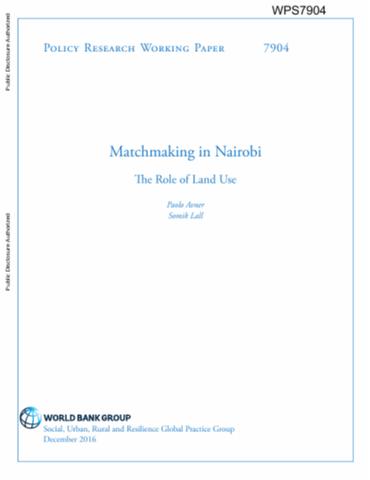Resource information
Well-functioning cities reduce the economic distance between people and economic opportunities. Cities thrive because they enable matchmaking -- among people, among firms, and between people and job opportunities. This paper examines employment accessibility in Nairobi, Kenya and evaluates whether modification of land use patterns can contribute to increases in aggregate accessibility. The assessment is based on simulation of counterfactual scenarios of the location of jobs and households throughout the city without new investments in housing or transport infrastructure. The analysis finds that modifications to the spatial layout of Nairobi that encourage land use clustering can increase the share of overall opportunities that can be accessed within a given time-frame. When commuters travel by foot or using the minibus network, the share of accessible economic opportunities within an hour doubles from 11 to 21 percent and from 20 to 42 percent respectively. The analysis also finds that spatial layouts that maximize the number of households that have access to a minimum share of jobs, through a more even jobs-housing balance, come at the expense of average accessibility. This result is interpreted as a trade-off between inclusive and efficient labor markets.


